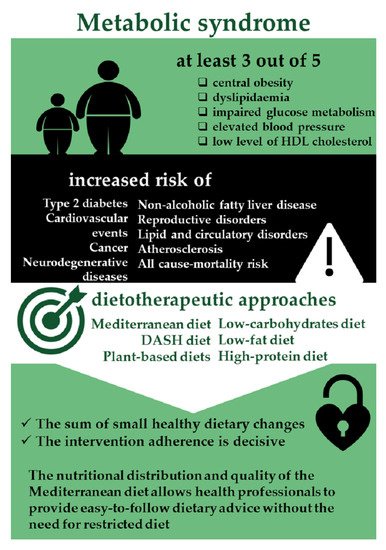
Peas are high-in protein, fibre, iron, and potassium. They should, however, be consumed in moderation. These legumes can cause indigestion for some people, especially those who are overweight and sedentary. It is best to avoid legumes for people who have sensitive stomachs, or who are unable to produce the enzymes needed for digestion. Also, arthritis sufferers and those with gout should limit their intake of proteins.
Micronutrients
Legumes are high in various micronutrients, including protein, B vitamins, iron, copper, manganese, and magnesium. These nutrients play an important part in the body's health, as well as preventing and maintaining diseases. These foods are rich in fiber, which can reduce cholesterol and blood pressure. You can also increase insulin sensitivity, which may help you lose weight.
Protein
A significant part of the human diet is legume proteins. They are rich in antioxidants, anti-inflammatory, antihypertensive, and other health benefits. They have the ability to chelate metallic ions. These benefits have led to the increased interest in legume protein hydrolysates as functional food ingredients.

Iron
LMICs are home to the most common micronutrient deficiency, which is iron and zinc. These deficiencies can be managed through nutrition education, dietary diversification, food fortification, and dietary diversity. Legumes, which are staples in many households, are a good source of iron and zinc as well. They are also low-glycemic with little to no phytate.
Zinc
Legumes are a great source of zinc. A half cup of cooked lentils and a cup kidney beans contain 0.9 mg each. However, legumes contain phytates, which can affect the absorption of zinc. You can make zinc more bioavailable by cooking the legumes, sprouting them, or fermenting them.
Calcium
Legumes are one nature's richest source of calcium. Many people believe calcium is only available in dairy products. But, the truth is legumes are rich in it. It is vital for healthy teeth and bones that legumes contain calcium. It also supports healthy muscles, nerves, and tendons. Besides being a great source of calcium, legumes are also great sources of fibre.
Magnesium
Magnesium-rich legumes are a great source. It is possible to get large amounts of this mineral from fish. Because they contain high amounts magnesium, salmon and tuna are great options. They are high in dietary fiber which is vital for keeping your body healthy.

Manganese
Consuming a variety legumes is one of the best ways of getting your daily manganese intake. These versatile legumes are high in manganese, other nutrients, and are rich sources of fiber as well as protein. You can make a delicious peanut butter and bake with them. They are great for salads!
Vitamin C
Low-glycemic legumes are plant foods that have low glucose levels. These legumes are rich sources of dietary fibre and bioactive chemicals that regulate blood glucose levels. These foods could also lower the likelihood of developing type 2 diabetes.
Potassium
Whether you're looking for a natural way to increase your potassium intake or want a quick way to boost your energy levels, potassium is a good choice. Potassium can be found in many foods and plays a vital role in many important functions. Too much potassium can lead to heart problems if you have chronic conditions.
FAQ
How much should I weigh for my height and age? BMI calculator and chart
Calculating your body mass index (BMI), is the best method to calculate how much weight to lose. A healthy BMI range should be between 18.5- 24.9. If you want to lose weight, then you should aim to drop about 10 pounds per month. Simply enter your height, weight and desired BMI into the BMI calculator to calculate it.
Check out this BMI chart to determine if you are overweight or obese.
Which diet is best for me?
There are many factors that influence the best diet, including your gender, age, weight, health condition, lifestyle, and personal preferences. You also need to consider how much energy you expend during exercise, whether you prefer low-calorie foods, and if you enjoy eating fruits and vegetables.
If you are trying to lose weight, then you may want to try intermittent fasting. Intermittent Fasting means that you eat only one meal per day and not three. You may find that this method works better for you than traditional diets that include daily calorie counts.
Studies have shown that intermittent fasting can improve insulin sensitivity and decrease inflammation. This could lead to lower blood sugar levels and a reduced risk of developing diabetes. Some research also suggests that intermittent fasting might promote fat loss, and improve overall body composition.
How can I get enough vitamins?
The majority of your daily needs can be met through diet alone. Supplements may be necessary if you are not getting enough of a particular vitamin. A multivitamin can contain all the vitamins that you need. Or you can buy individual vitamins from your local drugstore.
Talk to your doctor to find out which foods are rich in vitamins. Dark green leafy vegetables like spinach, broccoli and kale, as well as turnip greens and mustard greens such as turnip and mustard greens and bok choy, are rich in vitamins K & E.
If you are not sure how much vitamin you should be consuming, ask your doctor. He or she will recommend the appropriate dosage based on your medical history and current health status.
What is the problem with BMI?
BMI stands for Body Mass Index. This is a measure of body fat that is calculated based on height or weight. BMI is calculated using the following formula:
Add weight in kilograms to height in meters squared.
The score is expressed as a number between 0 and 25. A score of 18.5 or higher indicates overweight, while a score of 23 or higher indicates obesity.
A person who is 100kg and 1.75m tall will have a 22 BMI.
Statistics
- This article received 11 testimonials and 86% of readers who voted found it helpful, earning it our reader-approved status. (wikihow.com)
- In both adults and children, the intake of free sugars should be reduced to less than 10% of total energy intake. (who.int)
- According to the Physical Activity Guidelines for Americans, we should strive for at least 150 minutes of moderate intensity activity each week (54Trusted Source Smoking, harmful use of drugs, and alcohol abuse can all seriously negatively affect your health. (healthline.com)
- According to the 2020 Dietary Guidelines for Americans, a balanced diet high in fruits and vegetables, lean protein, low-fat dairy and whole grains is needed for optimal energy. (mayoclinichealthsystem.org)
External Links
How To
27 Steps to achieve a healthy lifestyle when your family only buys junk food
Cooking at home is the most popular way to eat healthily. However, many people are not skilled in preparing healthy meals. This article will give you some tips on how to make healthier choices when eating out.
-
Find restaurants that offer healthy options.
-
Before you order meat dishes, make sure to order salads or vegetables.
-
Ask for sauces made without sugar.
-
Avoid fried items
-
Instead of ordering fried meats, request grilled meats.
-
If you don't really need dessert, do not order it.
-
You should always have something else after dinner.
-
Take your time and chew slowly.
-
When you eat, drink plenty of fluids.
-
Don't skip breakfast and lunch.
-
Include fruit and vegetables with every meal.
-
Choose milk over soda
-
Avoid sugary beverages
-
Limit salt intake in your diet.
-
Limit how many times you dine at fast food outlets.
-
Ask someone to come along if you are unable to resist temptation.
-
Don't let your children watch too much TV.
-
Turn off the television during meals.
-
Avoid energy drinks
-
Regular breaks from work are important.
-
Get up early and go for a run.
-
Get active every day.
-
Start small, and work your way up.
-
Set realistic goals.
-
Be patient.
-
Even if you don’t feel like exercising, make time for it.
-
Use positive thinking.